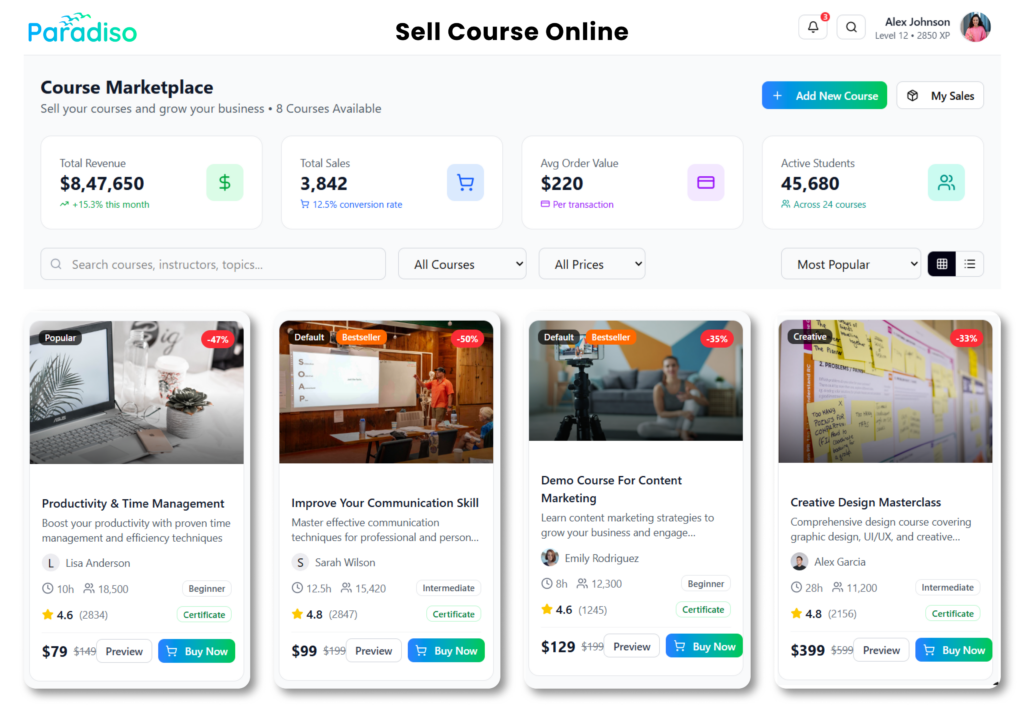Self-paced Learning
When it comes to training, there’s a primary difference between corporate training for employees and customer training. The responsibility is to help your customers instead of expecting them to help you. It indicates that you can’t simply plan training programs for your customers or offer them a limited time to access courses and resources. Instead, the learning method should be truly self-paced so that customers can effortlessly access the data they require anytime, anyplace. An operative way to make this happen is by utilizing a Learning Management System (LMS), which allows you to offer consumers the essential information they need on priority. With an LMS, you can confirm that customers can access training resources at their comfort to enhance their experience with your product or service.
Tailored Multi-language Interface
In todays’ world, businesses serve training to a wide variety of customers who come from different countries, speak different languages, and have different cultures. It can make customer training difficult, particularly when filling communication breaches with a common language like English. However, with the support of eLearning translation and an advanced Learning Management System (LMS), this problem can be solved. By tailoring the LMS with a multi-language interface, you can deliver a more customized, \dl 6r5ynamic, and appealing customer experience throughout the training program. It will not only support beating communication barricades but also improve their overall satisfaction with your product or service.
Monitoring, Analyzing, and Reporting
Upgrading and enhancing your customer training sessions is significant to gain a greater ROI. Hence, choosing an LMS allows you to monitor the progress of specific customer training programs by producing reports based on real-time data is essential. By analyzing these reports, you can measure the success rate of your customer training programs utilizing necessary metrics such as the training materials accessed by customers; the time invested in each course, and recognized breaches in skills and knowledge. In addition, it will empower you to make informed decisions about enhancing your customer training sessions to confirm that they are providing the best possible outcomes.
Integration
Integrating your LMS with current ERP and CRM solutions can improve and personalize the learning experience for customers. This incorporation can simplify the learning approach while delivering valuable acumens into which customers access course content. With this data, you can suggest relevant courses or training sessions by notifying automated warnings or messages. Moreover, you can use the integration to measure the efficacy of each training session in improving product adoption, customer loyalty, and overall customer experience.
Technical Support
The flawless functioning and performance of both on-premise and cloud-based LMSs need continuous technical support. LMS sellers provide technical support facilities to help your organization utilize the LMS proficiently without needing a dedicated employee. However, the quality and speed of technical support may differ among top LMS sellers. Hence, when choosing a customer training LMS, confirming that the seller offers 24/7 technical support. Moreover, you must select a seller that provides technical support through various communication mediums such as emails, voice calls, text messages, and instant messages.













